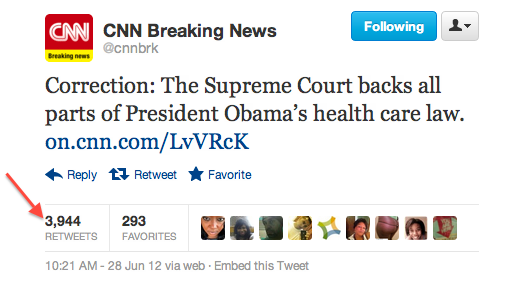Craig Silverman is the editor of Regret the Error at Poynter Institute, a blog reporting on media corrections, retractions, apologies and clarifications. It’s 40 years since the New York Times first ran corrections on page 2 but publishers have been issuing corrections for hundreds of years. Readers expect them and trust the organisations that do them. But how do we correct information in the age of social media when errors can spread far and wide before they are corrected? Here is Silverman’s advice, shared at news:rewired – full stream ahead on Friday:
Do not delete the tweet – Silverman’s ‘Law of Incorrect Tweets’ says that the original error will be retweeted more than the subsequent correction. Still, it is better to keep the error on record so there is context for corrections.
Act like a human – All journalists make mistakes, it happens. It is completely normal to worry and feel panicked about the effects of the error. Accepting this is the first step to better corrections.
Write like a human – Face up to the mistake. Readers do not expect 100 per cent accuracy. If you are honest and clear with them about the error they will trust you more.
Be clear about what was wrong, and the correct information – Don’t hide your error under jargon or excuses. The right facts are the most important part of the correction.
Due prominence – Hiding your corrections shows your insecurity. Bold writers issue bold corrections.
A correction is an act of promotion that builds trust – A 1998 survey by ASNE found 63% of newspaper readers “felt better” about a paper when they saw corrections.
Match corrections to distribution channels – Make sure your correction is visible on all channels that it has appeared on.
Be clear, consistent – Adopt a house style for corrections. In a tweet “Correction:” works perfectly well.
Reach out to people who reshared, retweeted. Activate the network effect – This is important especially if your error was shared by people prominent on social media.
Remember: an act of promotion.
Works best when full hearted – If you are dismissive of the error you look shady. It is better to be overly self-critical.
And the exception that proves the rule:



